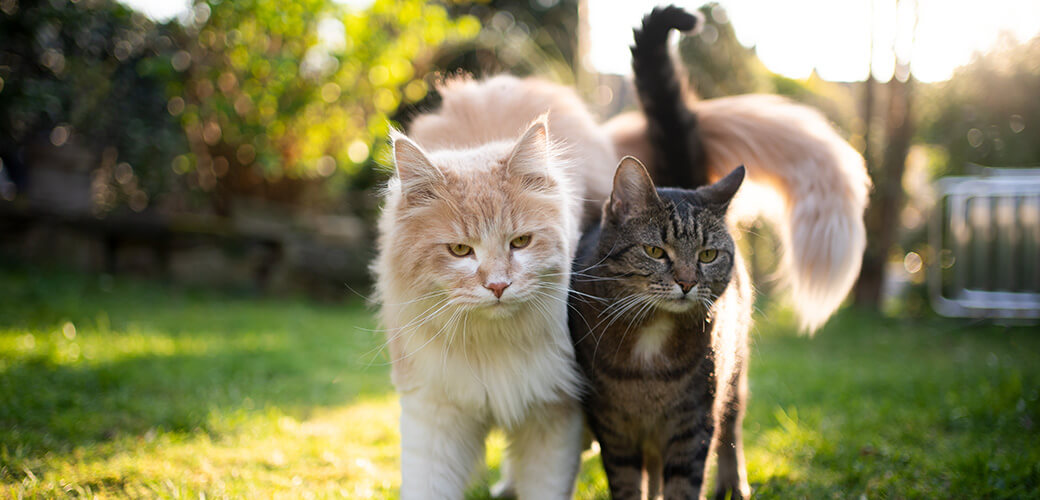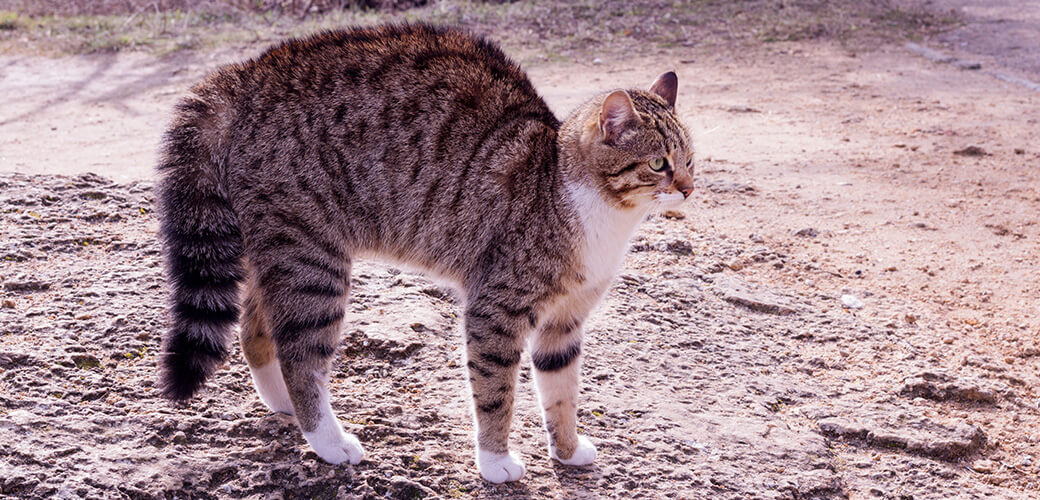Your cat’s tail is a fountain of knowledge that you can tap into. As a cat owner, you need to understand your cat’s tail language to be able t fully understand them. Some cat body language is easy to decipher, but the tail moves quickly and a cat’s wag doesn’t always mean what you might think it means.
Whether you have an aggressive cat with a stiff tail or a happy cat with a tail that’s become very dog-like, we’re going to help you figure out what their tail position and tail posture means. Your feline friend will thank you for being able to understand them better, and you may find it easier to care for and soothe them if you can pick up on their emotions just by looking at their tail.
Why it’s Important to Know Cat Tail Language
Cats use their bodies to talk to us. It’s funny because cats in the wild don’t actually vocalize much at all. Sure, they hiss and they growl in warning, but the meow of a cat is something they developed to help us understand them. That’s why you don’t hear those soft mewing sounds from big cats. Pet parents often rely on hearing their domesticated kitties understand their needs, but it’s not a great way of understanding them.
Instead, you can understand your cat by watching their tail and making note of the posture of their body. For example, a cat that is flicking the very end of their tail while the rest is down is inquisitive. They’re usually watching something and it’s a good idea to keep an eye on them. This tail flicker is a warning for pet owners. Your cat is about to do something very instinctual, such as chasing prey or jumping up where you don’t want them.
What Your Cat’s Tail is Telling you

Cat tails can say many things. Cats way their tails in similar ways to dogs on occasion, and experienced pet parents will see that there are some similarities between a dog’s tail language and a cat’s tail language. Dogs and cats both use a tucked tail to indicate extreme unhappiness or fear – they will usually run and hide following this tail position.
By tapping into your cat’s tail motions, you can better understand your cat’s emotions and needs. Owning a cat and understanding the cat’s mood doesn’t have to be a huge question mark.
Tail position meanings
Tail held straight up: Open body language, happy to be around the people or animals currently in the room.
Tail wrapped around or laying over you: This is a cat’s way of saying that they feel content with you at the moment; it’s as much an “I love you” as an “I’m socializing with you”. If your cat is laying down next to you when they do this, don’t be surprised if they fall asleep.
- Puffed tail: Your cat has been startled or is extremely excited by something. To figure out which emotion it is, look for other signs in their body. Dilated pupils, ears folded back, etc.
- Cat holding tail high: A natural position for household cats, they’re just going about their business and don’t need anything from you.
- Slight curve to tail: When the tail is in its most common position – held up with a slight curve to the tip – your cat is happy and not in any distress.
- The tail looks like a question mark: This is the position that cats use to signal that they’re in a playful mood, it may be accompanied by tail swishing.
- Tail held low to the ground: Be cautious, your cat is signaling that they feel stressed in the current situation.
- Tail tucked away between legs: Your cat is feeling frightened, scared, or anxious.
Tail movements and meanings
- Cat tail swishing back and forth: This is the playtime tail, showing that your cat is in a playful mood and will likely jump on any other cats in the household shortly. Be warned that playful tails can also signal attack mode, so watch for low body language and crouching.
- Cat twitching tail straight up: A sign of agitation, which can quickly lead to other negative emotions if the cause isn’t removed.
- End of tail flicking: An inquisitive and mischievous cat who may be about to do something naughty.
- Wrapping tail around your leg as they walk past: This is a friendly greeting to someone they love.
How to Gain Greater Understanding of Cat Tail Language

The best way to fully understand cat tail movement meaning and the emotions that your cat is feeling is to put in the time to learn how they react to everyday situations. As you spend more time with your feline friend, it might be good to have a cat tail language chart in your home until you get to grips with their moods.
FAQs:
Q: What should I do if my cat’s mood suddenly changes?
A: If your cat seems to often be aggressive, or their regular cat tail body language suddenly changes, consider taking your kitty to the vet and asking for advice. They could be feeling unwell or experiencing pain, which means they’ll need veterinary medicine and treatment to get back to their regular fluffy self.
Q: What other cat tail signals or cat tail positions should I pay attention to?
A: Humans should watch the way their cat holds their tail in different situations to understand the affiliative behavior with each position and movement. Steer clear of other animals whose behavior you aren’t familiar with, and remember to keep paying attention to any changes in your cat’s body language when new events happen around them.

